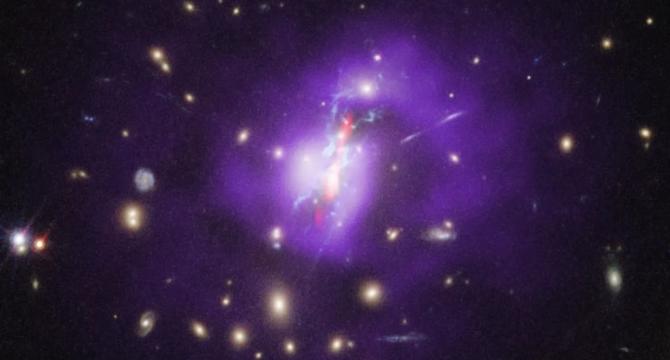Livescience
1M
398

Image Credit: Livescience
James Webb Space Telescope reveals how a cosmic 'Phoenix' cools off to birth stars
- The James Webb Space Telescope (JWST) was used to investigate the extreme cooling of gas in the Phoenix cluster, located around 5.8 billion light-years from Earth.
- At the heart of the Phoenix cluster is a supermassive black hole 10 billion times as massive as the sun, yet stars continue to form at an incredible rate.
- The JWST investigation aims to resolve the mystery of how star formation persists despite the presence of a supermassive black hole that should be hindering it.
- Researchers liken the gas cooling in the Phoenix cluster to a ski slope, where not all the gas cools to low temperatures, analogous to skiers not making it down the mountain.
- Using JWST's Mid-Infrared Instrument (MIRI), researchers located the 'missing skiers' or cooling gas contributing to star formation within cavities in the Phoenix Cluster.
- The team found gas at around 540,000 degrees Fahrenheit located within cavities in the Phoenix Cluster, essential for star formation.
- MIRI's sensitivity and ability to detect ionized neon and oxygen atoms in the Phoenix Cluster proved crucial in this investigation.
- This research sheds light on the unique characteristics of the Phoenix Cluster and sets the stage for studying other galaxy clusters using similar techniques.
- The team's findings were published on Feb. 5 in the journal Nature, offering valuable insights into the cooling mechanisms of gas in the Phoenix Cluster.
Read Full Article
23 Likes
For uninterrupted reading, download the app